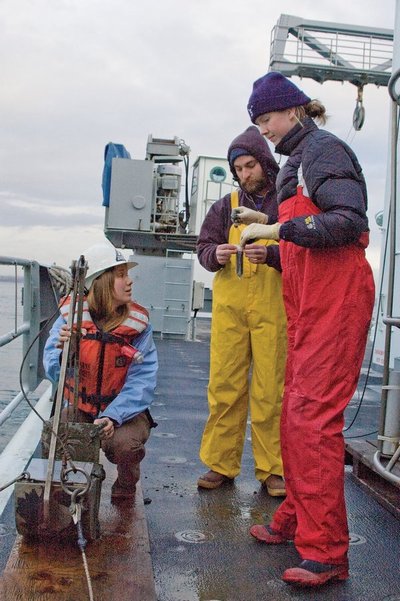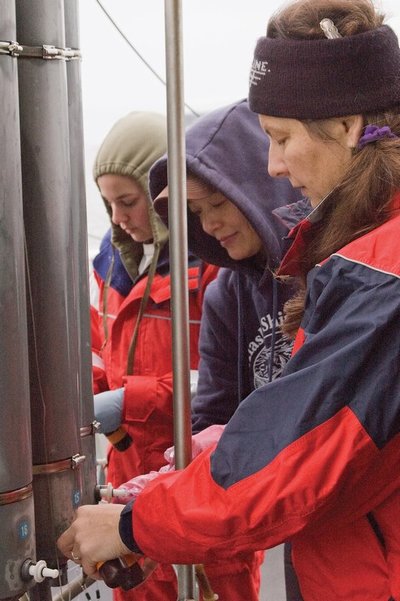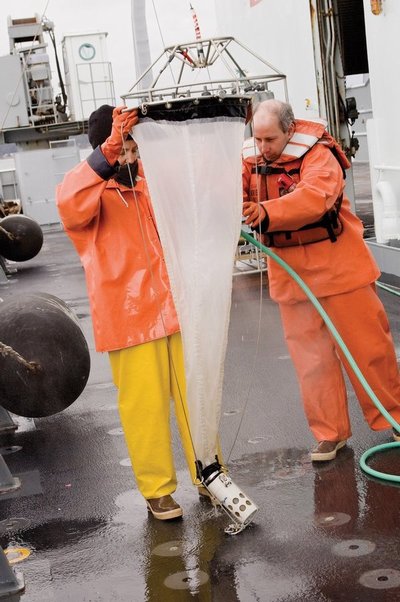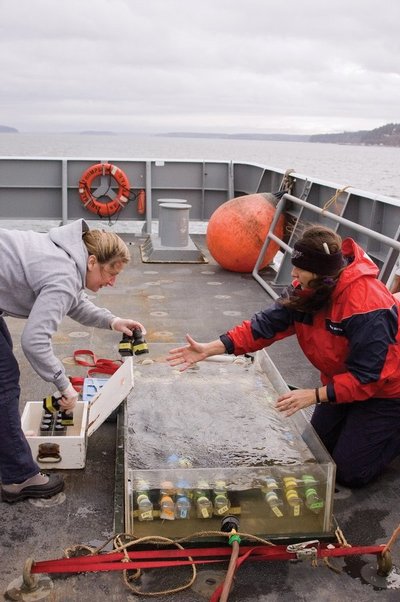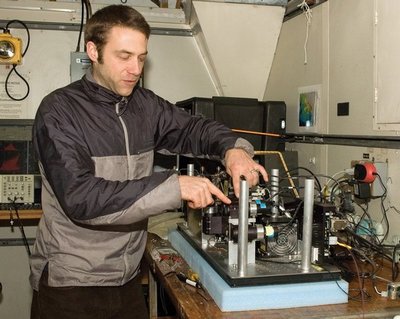February 14, 2008
Cruise information plays part in Sound solutions
The most extensive sampling for zooplankton ever in Puget Sound and the first measurements for acidification of the Sound’s waters — something of concern because it’s happening in the open ocean and could affect the skeletons and shells of creatures large and small here in the Sound — were among the tasks last week on the UW’s vessel Thomas G. Thompson.
It’s the 10th anniversary year of PRISM cruises that routinely enlist and train undergraduate and graduate students to measure the sound’s vital statistics including, in recent years, the oxygen levels in Hood Canal where troubled waters have resulted in summertime fish kills three of the last six years. Jan Newton, principal oceanographer with the UW’s Applied Physics Laboratory and chief scientist for last week’s expedition, is a key investigator in the Hood Canal Dissolved Oxygen Program.
PRISM is the Puget Sound Regional Synthesis Model that incorporates data about the sound, surrounding watersheds, atmospheric conditions, effects from urbanization and more. The brainchild of UW oceanography professor Jeff Richey, PRISM is powered by data collected by a variety of groups, such as NOAA, and the twice-yearly PRISM expeditions.
Participants on board last week ranged from UW undergraduate volunteer Andy Clos to Dan Hannafious with the citizen-centric Hood Canal Salmon Enhancement Group to Hans Daubenberger, a habitat expert with the Port Gamble S’Klallam Tribe.
Along with a number of other firsts, staff from the UW labs of Gabrielle Rocap and Claire Horner-Devine launched a census of marine microbes in Hood Canal as part of the International Census of Marine Microbes program. Hood Canal is one of only 50 census sites worldwide so far.
Newton says the insults to our inland sea are only going to increase as population grows and climate changes, which is why it’s so important to have basic measurements and the latest models so choices can be weighed.
